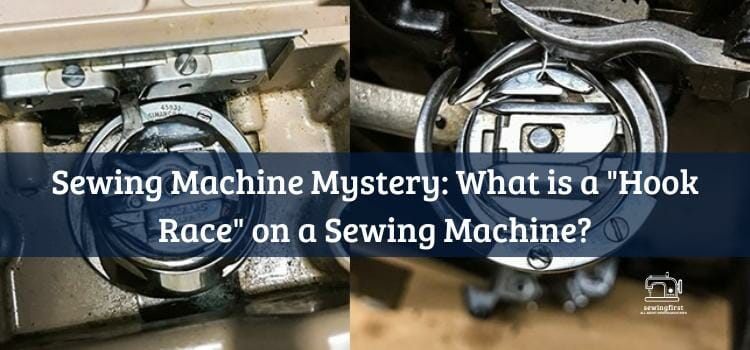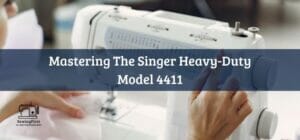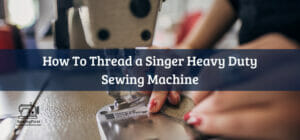One of the features of modern sewing machines is a so-called “hook race.” It’s an important part of the machine, but it’s not something to be taken lightly!
Not everyone understands what this feature does or why you need it. That’s why I’m writing this article – to give people a basic understanding of the hook race and why it’s a vital part of any sewing machine.
We’ll start by exploring how the hook race works and how it interacts with other parts of your sewing machine, like the bobbin. Then we’ll look at some popular types of hook races and discuss which one might be best for you.
Related Topic: How to Thread a Singer 248: Effortless, Step-by-Step Guide
Table of Contents
ToggleWhat is a Hook Race on a Sewing Machine?
The hook race is a small, circular part of the sewing machine that houses the needle and bobbin. It is responsible for moving the needle up and down as it sews, creating stitches in the fabric. The hook race works by rotating around a central axis, allowing the needle to move up and down in a consistent motion. This motion is what creates the stitches in the fabric.
The hook race also helps keep tension on the thread so that it doesn’t become too loose or too tight while sewing. Without this feature, your machine would not be able to create even stitches which could cause problems with your projects.
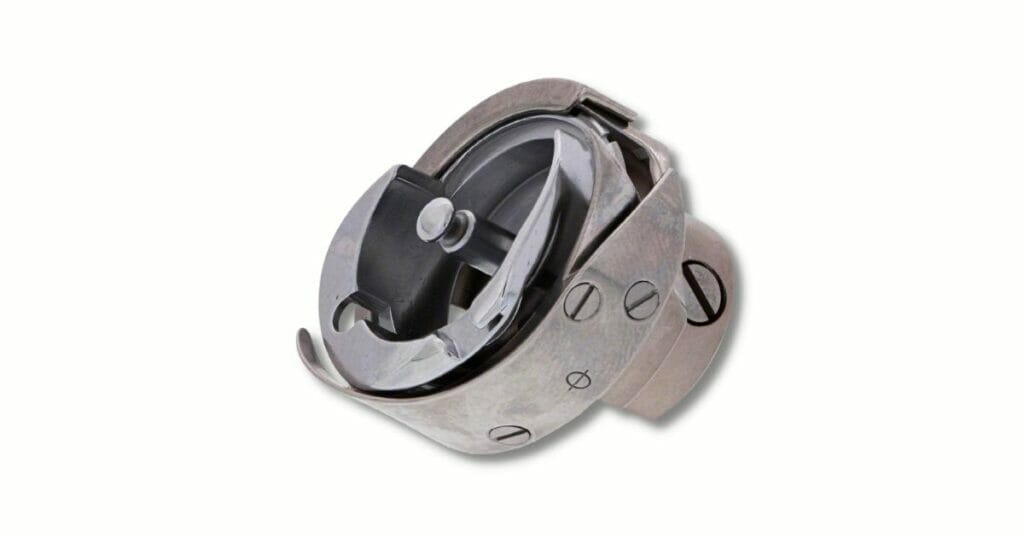
Types of Hook Races
There are several different types of hook races available for sewing machines. The most common type is the rotary hook race, which is a circular part that houses the needle and bobbin. This type of hook race rotates around a central axis, allowing the needle to move up and down in a consistent motion.
Other types of hook races include oscillating hook races, which have an oval shape and move back and forth instead of rotating; shuttle hook races, which use a shuttle-like mechanism to move the needle up and down; and cam-driven hook races, which use cams to control the movement of the needle. Each type has its own advantages and disadvantages, so it’s important to consider your needs before selecting one for your machine.
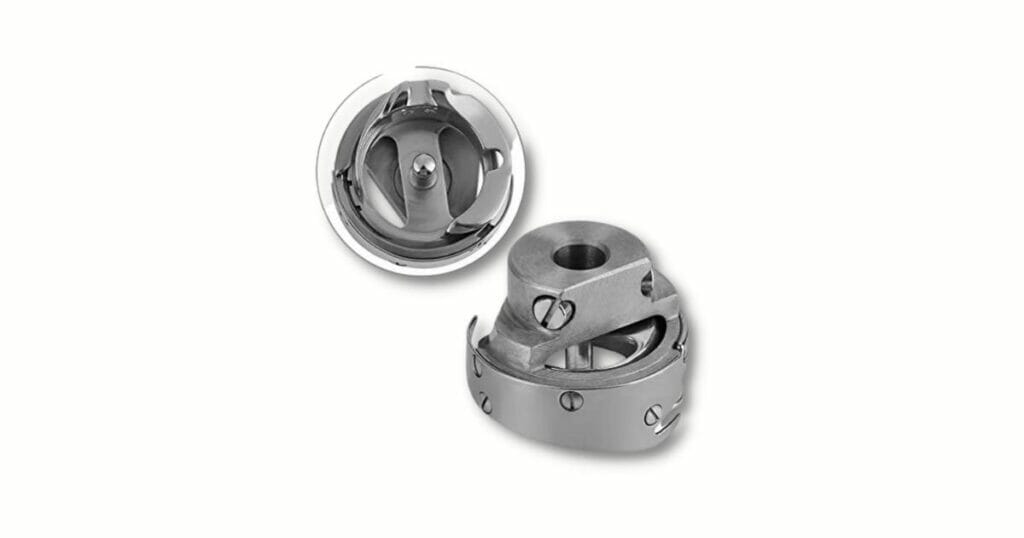
Benefits of the Hook Race
1. Improved Stitch Quality: The hook race helps keep tension on the thread, which ensures that stitches are even and consistent. This helps to create a professional-looking finish on any project.
2. Increased Speed: The hook race allows the needle to move up and down quickly, resulting in faster sewing speeds. This is especially helpful when working with large projects or multiple layers of fabric.
3. Durability: The hook race is made from durable materials that can withstand repeated use without wearing out or breaking down over time. This ensures that your machine will last for years to come.
4. Reduced Noise: The hook race helps reduce noise from the machine while it’s in use, making it easier to work in quiet environments such as a home office or bedroom.
In conclusion, the hook race is an essential part of any sewing machine. It helps to keep tension on the thread, resulting in even stitches and a professional-looking finish. It also increases speed and durability, while reducing noise from the machine. With so many benefits, it’s no wonder why this feature is so important!
How to Install a Hook Race
Step 1: Prepare the Machine
Before installing a new hook race, it is important to prepare the sewing machine. Start by unplugging the machine and removing any fabric or thread that may be in the way.
Then, use a screwdriver to remove any screws that are holding the old hook race in place. Once all of the screws have been removed, carefully lift off the old hook race and set it aside.
Step 2: Install New Hook Race
Once you have removed the old hook race, you can begin to install the new one. Start by placing the new hook race into position on top of the machine’s base plate. Make sure that it is centered and aligned correctly before tightening down any screws. Use a screwdriver to secure all of the screws tightly so that they do not come loose over time.
Step 3: Test Hook Race
After installing your new hook race, it is important to test it out before using your machine for any projects. Turn on your sewing machine and check that the needle moves up and down smoothly without any issues. If everything looks good, then you can start using your machine as normal!
Hook Race on an Embroidery Machine
A hook race on an embroidery machine is an important part of the sewing machine, located beneath the needle and feed dogs. It keeps the thread spinning rapidly and evenly so that stitches can be formed accurately.
The hook race consists of a series of metal discs with metal hooks that rotate around while sewing takes place. As they rotate, these metal hooks grab strands from multiple spools at once and form them into parallel threads that are used for stitching.
When it comes to embroidery machines, the hooker races are slightly different in design than regular sewing machines. They need to be able to fit larger spools of thread so that more colors can be used for intricate designs.
Moveable arms support these much bigger spool sizes, enabling the hooker race to swiftly move back and forth during operation.
It’s essential that this entire process happens quickly and smoothly as time is practically money when it comes to complicated projects such as creating detailed embroidery designs. Those intricate details require artistic precision, which your machine will deliver with a functioning Hook Race!
Troubleshooting Tips for Common Issues with the Hook Race
- Sewing Machine Oil: If you notice that your hook race is not moving smoothly, it may be due to a lack of lubrication. Make sure to regularly oil the hook race with sewing machine oil to ensure that it is running smoothly.
- Feed Dogs: If the feed dogs are not properly aligned, they can interfere with the movement of the hook race and cause it to jam or skip stitches. Check that the feed dogs are in their correct position and adjust them if necessary.
- Loose Screws: Loose screws can cause the hook race to become misaligned, resulting in uneven stitches or skipped stitches. Make sure all screws are tightened securely before using your machine.
- Bent Needle: A bent needle can also interfere with the movement of the hook race, causing it to jam or skip stitches. Inspect your needle for any signs of damage and replace it if necessary.
- Thread Tension: If the thread tension is too tight or too loose, it can cause the hook race to become misaligned and result in skipped stitches. Make sure to adjust the thread tension according to the manufacturer’s instructions for the best results.
- Adjust the thread tension according to the manufacturer’s instructions
- Inspect the needle for any signs of damage or wear. Additionally, make sure to regularly oil the hook race with sewing machine oil to ensure that it is running smoothly.
- Make sure the needle is correctly threaded and positioned correctly for the hook race.
- Check the bobbin area to make sure the thread isn’t tangled or caught on any part of the mechanism.
- Inspect the hook race for any dirt or debris that may be preventing it from rotating properly.
- Ensure that the presser foot is in its correct position and not blocking access to the hook race.
- If necessary, clean out any lint or dust buildup around the hook race using a brush or vacuum cleaner attachment.
Maintenance and Cleaning Tips for the Hook Race
Regular Maintenance
Regular maintenance is essential for keeping the hook race running smoothly. Make sure to oil the hook race with sewing machine oil every few months to ensure that it is properly lubricated. Additionally, check all of the screws and make sure they are tightened securely so that they do not become loose over time.
Cleaning
Cleaning your sewing machine regularly can help to keep the hook race running smoothly. Use a soft cloth and mild detergent to clean machine and remove any dirt or debris that may be interfering with the hook race. Additionally, inspect the needle for any signs of damage and replace it if necessary.
Cleaning Tips
- Check the stitch plate for any dirt or debris that may be preventing the hook race from rotating properly.
- Place a piece of fabric under the presser foot and use a brush to clean out any lint or dust buildup around the hook race.
- Remove the bobbin assembly and check for any dirt or debris that may be interfering with the movement of the hook race.
- Clean the hook cover with a soft cloth and mild detergent to remove any dirt or debris that may be preventing it from running smoothly.
- Add a drop of oil to lubricate the hook race and ensure that it is running smoothly.
- Make sure the bobbin thread is correctly threaded and positioned correctly for the hook race.
- Use a brush to clean out any lint or dust buildup around the hook race using a brush or vacuum cleaner attachment.
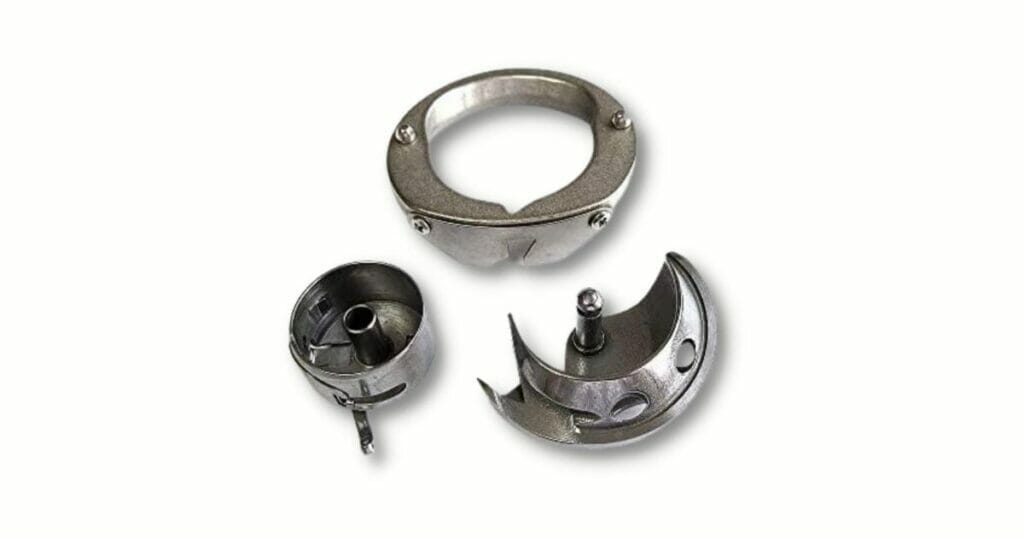
Conclusion
In conclusion, the hook race of a sewing machine is a vital part of the device that determines how quickly it will sew. By understanding its relationship with the needle, bobbin, and feed dogs, you can make sure your machine is working at peak efficiency.
Understanding how each piece interacts with one another gives you control over how much hook space is necessary to get the job done in the shortest time possible. There’s no need to be confused by this mystery any longer!
FAQs
What is a race hook for?
A race hook is a part of the sewing machine that helps to move the needle in and out of the fabric. It is connected to the needle bar and works in conjunction with other parts such as the feed dogs, bobbin, and presser foot. The hook race helps to ensure that the needle moves smoothly through the fabric without any snags or tangles.
What is a hook bobbin?
A hook bobbin is a small spool of thread that is used in conjunction with the hook race. The hook bobbin helps to keep the thread tension even and consistent as it moves through the fabric. It also helps to ensure that the needle does not become tangled or snagged while sewing.
What is a hook stitch?
A hook stitch is a type of stitch that is created when the needle passes through the fabric and the hook race catches the thread. The hook stitch helps to create a secure and even seam that will not unravel or come undone over time.
How does a rotary hook work?
A rotary hook is a type of hook race that is used in some sewing machines. It works by rotating around the needle bar, allowing the needle to move up and down quickly and efficiently. The rotary hook helps to ensure that the stitches are even and secure, as well as providing a smooth and consistent stitch pattern
What is Hook rate?
The hook rate is the speed at which the hook race rotates. It is measured in revolutions per minute (RPM) and can vary depending on the type of sewing machine and the fabric being used. The higher the RPM, the faster the hook race will rotate, allowing for more stitches to be made in a shorter amount of time

